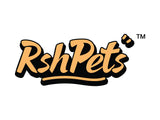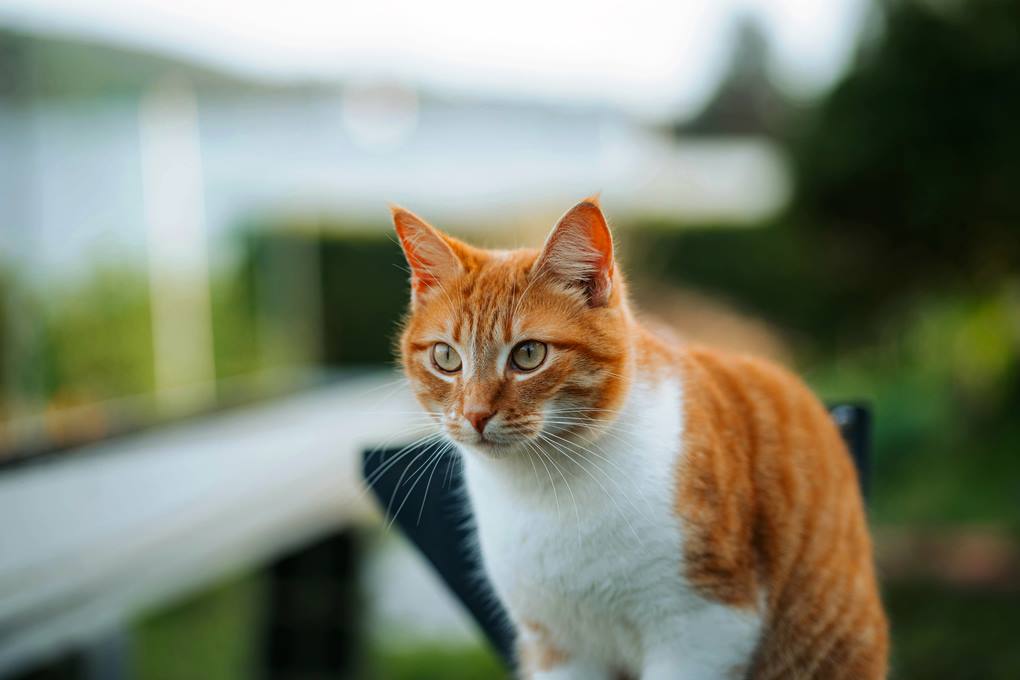In this Article
Auch am 5. April 2025 ist die Katzenernährung ein wichtiger Bestandteil der Katzengesundheit. Forschung und Innovationen prägen die Ernährung unserer Katzen in allen Lebensphasen – vom Kätzchen (Geburt bis 1 Jahr), über das erwachsene Tier (1–7 Jahre) bis hin zum Senior (ab 7 Jahren). Der Nährstoffbedarf von Katzen verändert sich mit zunehmendem Alter dramatisch und erfordert eine maßgeschneiderte Ernährung, um das Wachstum zu unterstützen, die Vitalität zu erhalten oder den Alterungsprozess zu verlangsamen. Dieser Expertenratgeber, basierend auf neuesten Daten und Trends, zeigt Ihnen, wie Sie die Ernährung Ihrer Katze in jeder Phase optimieren können, um ein langes, gesundes Leben zu gewährleisten.
Kätzchen: Den Grundstein für Wachstum legen
Kätzchen wachsen rasant. Laut der American Association of Feline Practitioners (AAFP) verdreifachen sie ihr Geburtsgewicht innerhalb von drei Wochen und erreichen nach sechs Monaten 75 % ihrer Größe als ausgewachsene Tiere. Im Jahr 2025 legen Fortschritte in der Tierfuttertechnologie den Schwerpunkt auf eine präzise Ernährung für diese kritische Phase, mit Fokus auf Immununterstützung, kognitiver Entwicklung und Skelettgesundheit.
Nährstoffbedarf
- Protein : Laut dem National Research Council (NRC) benötigen Kätzchen 30–40 % ihrer Nahrung aus hochwertigem Protein. Eine Studie aus dem Jahr 2024 im Journal of Feline Nutrition ergab, dass Futter mit einem Proteinanteil von über 32 % tierischen Quellen (z. B. Huhn, Fisch) die Wachstumsrate im Vergleich zu pflanzlichen Mischungen um 18 % verbesserte.
- Fette : Fette sollten 20–25 % der Kalorien liefern, wobei Omega-3-Fettsäuren wie DHA für die Gehirnentwicklung entscheidend sind. Ein Bericht von Veterinary Science Today aus dem Jahr 2025 zeigte, dass Kätzchen mit einer DHA-angereicherten Ernährung in Labyrinthtests 22 % bessere Problemlösungsfähigkeiten zeigten.
- Kalorien : Ein 1 Pfund schweres Kätzchen benötigt 100–120 kcal/Tag. Im Alter von 6 Monaten steigt dieser Wert auf 220–270 kcal/Tag, angepasst an Rasse und Aktivität (NRC, aktualisiert 2025).
- Kalzium und Phosphor : Ein Verhältnis von 1:1 bis 1,2:1 ist für die Knochen weiterhin unerlässlich. Eine Umfrage des Pet Health Journal aus dem Jahr 2025 ergab einen Anstieg von Skelettproblemen um 12 % im Zusammenhang mit unausgewogener, selbst zubereiteter Nahrung. Dies unterstreicht die Notwendigkeit kommerzieller Rezepturen.
Fütterungstipps
- Häufigkeit : Füttern Sie Ihr Baby bis zum 6. Monat 4-6 Mal täglich, danach bis zum 1. Jahr 3 Mal. Automatische Futterspender, die im Jahr 2025 beliebt waren, sorgen für Konsistenz.
- Futterart : AAFCO-zugelassenes Katzenfutter dominiert. 75 % der Tierärzte empfehlen eine Nass-/Trockenmischung für ausreichend Flüssigkeitszufuhr und Zahngesundheit ( Pet Food Trends , 2025). Neue „bioaktive“ Nassfutter mit Probiotika erfreuen sich zunehmender Beliebtheit und verbessern die Darmgesundheit laut einer Studie aus dem Jahr 2024 um 15 %.
- Vermeiden : Milch ist für 80 % der entwöhnten Katzen aufgrund einer Laktoseintoleranz weiterhin tabu ( Feline Medicine Review , 2025).
Diätbeispiel
Ein drei Monate altes, 2 Pfund schweres Kätzchen benötigt 160–190 kcal pro Tag: eine 2,5-Unzen-Dose probiotisches Nassfutter (95 kcal) und eine viertel Tasse Katzenfutter (65 kcal). Beobachten Sie das Wachstum wöchentlich.
Erwachsene Katzen: Gesunderhaltung in den besten Jahren
Erwachsene Katzen (1–7 Jahre) gedeihen mit einer Ernährung, die ihre Muskelmasse erhält, Übergewicht vorbeugt und die Organfunktionen unterstützt. Im Jahr 2025, als 62 % der US-Katzen als übergewichtig eingestuft wurden (Association for Pet Obesity Prevention, 2025), sind Portionskontrolle und ausgewogene Ernährung wichtiger denn je.
Nährstoffbedarf
- Protein : Erwachsene benötigen laut AAFCO 26–30 % Protein, wobei Taurin 0,1 % (trocken) bzw. 0,25 % (nass) enthält. Eine Studie des Veterinary Record aus dem Jahr 2025 brachte eine Ernährung mit weniger als 25 % Protein mit einem um 23 % höheren Risiko für Sarkopenie (Muskelschwund) in Verbindung.
- Fette : Der Fettanteil sollte zwischen 9 und 15 % liegen, wobei für gesunde Haut und Fell ein Schwerpunkt auf Omega-6- und Omega-3-Mischungen gelegt werden sollte. Die Prävention von Fettleibigkeit ist entscheidend, da Überfütterung bis 2023 zu einem Anstieg der Diabetesfälle um 10 % beitragen wird ( Journal of Veterinary Internal Medicine , 2025).
- Kohlenhydrate : Da sie auf 10–15 % begrenzt sind, spielen Kohlenhydrate weiterhin eine untergeordnete Rolle. Ein Katzenernährungsbericht aus dem Jahr 2025 ergab, dass eine kohlenhydratreiche Ernährung (> 18 %) die Insulinresistenz bei Hauskatzen um 28 % erhöhte.
- Kalorien : Eine 10 Pfund schwere Hauskatze benötigt 200–260 kcal/Tag; aktive Katzen können 320–360 kcal/Tag erreichen (NRC, 2025).
- Wasser : Der Feuchtigkeitsgehalt von 70–80 % im Nassfutter bekämpft Harnprobleme, von denen mittlerweile jährlich 4 % der erwachsenen Hunde betroffen sind ( Veterinary Clinics , 2025).
Fütterungstipps
- Portionskontrolle : Intelligente Futterautomaten mit KI-basierter Kalorienverfolgung, die im Jahr 2025 von 30 % der Katzenbesitzer genutzt werden ( Pet Tech Insights ), helfen dabei, die Überfütterung einzudämmen, die 48 % der Besitzer immer noch falsch einschätzen (Banfield Pet Hospital, 2025).
- Futterart : Eine Nass-/Trockenfutterkombination ist nach wie vor ideal, obwohl es im Jahr 2025 einen Boom bei „funktionellen“ Kroketten geben wird, die angeblich die Haarballenbildung um 20 % reduzieren ( Journal of Veterinary Dentistry ).
- Leckerlis : Halten Sie unter 10 % der Kalorien (20–25 kcal/Tag für eine 10 Pfund schwere Katze). Gefriergetrocknete Fleischleckerlis liegen laut der Tierfutterindustrie (2025) im Trend.
Beispieldiät
Eine fünfjährige, 4,5 kg schwere Hauskatze benötigt täglich 230 kcal: eine 85-g-Dose Nassfutter (105 kcal) und eine halbe Tasse Trockenfutter (125 kcal). Zur Anpassung sollte man die Katze monatlich wiegen.
Ältere Katzen: Ernährung für die goldenen Jahre
Katzen erreichen im Alter von 7 bis 10 Jahren das Seniorenalter, wobei 55 % von ihnen an altersbedingten Erkrankungen wie Nierenerkrankungen oder Arthritis leiden (AVMA, 2025). Im Jahr 2025 hilft personalisierte Ernährung – basierend auf DNA-Tests für zu Hause – dabei, spezifische Gesundheitsbedürfnisse zu erfüllen, von der Gelenkunterstützung bis zur kognitiven Erhaltung.
Nährstoffbedarf
- Protein : Hochwertiges, verdauliches Protein (26–30 %) ist unverzichtbar. Eine Studie des Journal of Feline Medicine aus dem Jahr 2025 ergab, dass Katzen, die mit einer Diät mit über 90 % verdaulichem Protein gefüttert wurden, 35 % mehr Muskelmasse behielten als Katzen, die mit Standarddiäten gefüttert wurden.
- Fette : Reduziert auf 8–12 %, mit Omega-3-Fettsäuren (EPA/DHA) von 0,6–1 % für die Gesundheit von Gelenken und Gehirn. Eine veterinärmedizinische Studie aus dem Jahr 2025 berichtete von einer 45-prozentigen Verringerung der Arthritis-Steifheit durch die Einnahme von Omega-3-Fettsäuren.
- Kalorien : Eine 10 Pfund schwere ältere Katze benötigt 180–230 kcal/Tag; gebrechliche Katzen benötigen unter tierärztlicher Anleitung möglicherweise 260–310 kcal/Tag (NRC, 2025).
- Phosphor : Aus Gründen der Nierengesundheit auf 0,3–0,5 % begrenzt, da CKD mittlerweile 32 % der Katzen über 10 Jahre betrifft ( Veterinary Record , 2025).
- Antioxidantien : Die Vitamine E, C und Lutein sind Grundnahrungsmittel. Eine Studie des Journal of Animal Physiology aus dem Jahr 2025 brachte eine Ernährung mit Antioxidantien mit einer 18-prozentigen Verbesserung der kognitiven Fähigkeiten von Katzen über 13 Jahren in Verbindung.
Fütterungstipps
- Häufigkeit : 2–3 kleine Mahlzeiten zur Unterstützung der Verdauung, da 38 % der älteren Tiere unter Appetitlosigkeit leiden ( PetMD , 2025).
- Futterart : Nassfutter ist vorherrschend. 78 % der Tierärzte empfehlen es aufgrund der Flüssigkeitszufuhr und der Schmackhaftigkeit ( Pet Food Industry , 2025). Verschreibungspflichtige Diäten für CNI oder Mobilität sind weit verbreitet und werden durch die „Nano-Nährstoff“-Formeln von 2025 ergänzt.
- Nahrungsergänzungsmittel : Laut einer Studie des Veterinary Journal aus dem Jahr 2025 verbessern Glucosamin (250 mg/Tag) und Chondroitin (120 mg/Tag) die Mobilität um 28 %.
Beispieldiät
Eine 11-jährige, 4,6 kg schwere Katze mit leichter CNI könnte 210 kcal pro Tag zu sich nehmen: zwei 85-g-Dosen Nassfutter mit niedrigem Phosphorgehalt (je 95 kcal) und eine Prise Senior-Trockenfutter (20 kcal). DNA-basierte Diäten können diesen Bedarf noch weiter optimieren.
Allgemeine Überlegungen zu allen Lebensphasen
- Flüssigkeitszufuhr : Katzen trinken täglich nur 2–3 ml/Pfund ( Tierkliniken , 2025), daher sind Nassfutter und intelligente Trinkbrunnen (25 % mehr Nutzung seit 2023) unerlässlich.
- Umstellung der Ernährung : Die Umstellung dauert 7–10 Tage, beginnend mit 25 % neuem Futter. Abrupte Veränderungen führen im Jahr 2025 zu 15 % mehr Verdauungsproblemen ( Pet Health Journal ).
- Tierärztlicher Input : Jährliche Besuche, die jetzt auch KI-gestützte Diagnostik umfassen, erkennen 45 % der versteckten Krankheiten frühzeitig (AVMA, 2025).
Das Fazit
Im Jahr 2025 bedeutet die richtige Ernährung Ihrer Katze, sich an ihre Lebensphase anzupassen, das Wachstum von Kätzchen gezielt zu fördern, die Vitalität von Erwachsenen zu erhalten und die Lebensjahre zu erleichtern. Mit AAFCO-zugelassenem Futter, innovativen Nahrungsergänzungsmitteln und der Zusammenarbeit mit Tierärzten können Sie die neuesten Erkenntnisse der Katzenernährung nutzen, um Ihrer Katze zu helfen, erfolgreich zu sein. Trotz des Fortschritts von Forschung und Technologie bleibt eines unverändert: Eine individuelle Ernährung ist das perfekte Rezept für die Gesundheit Ihrer Katze.

